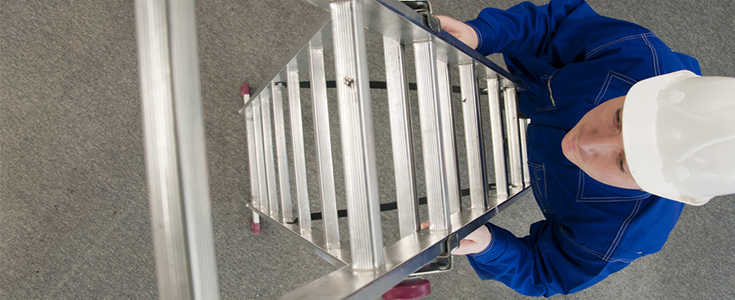Innovations In Ladder Design That Make Our Lives Easier
07/04/2017
The ladder is an undeniably ancient invention, with its first depictions now thousands of years old. It’s certainly stood the test of time, and it might not seem like it’s changed much. But although it’s true the overall design has stayed roughly the same, we’ve made lots of piecemeal advances in ladder technology that now make jobs all over the world safer, easier and more convenient for homeowners and professionals alike.
Innovations In Ladder Security
Amongst the most important advances we’ve made in the ladder industry involve the way we secure ladders to surfaces when we’re setting them up.
These include:
Extruded hooks: Hooks allow you to quickly and conveniently attach the ladder to the building or surface you’re working on, providing an extra safeguard against the possibility of it slipping.
Ridge hooks: Acting in on a similar principle on an even bigger scale, ridge hooks are commonly used in roof ladders, fastening the ladder securely and minimising the risk to its user.
PVC moulded rubber feet: A common feature of many of our ladders here at Browns, these act on the bottom end of the ladder, reducing the chances of it slipping against the ground and thereby safeguarding its user from falls from potentially fatal heights.
Perlon straps and chains: Most frequently used on step ladders, these basically help to guard against the possibility of collapse preventing the legs from splaying.
Changes To Ladder Rungs

Though the rungs seem like the most basic, unchangeable part of modern ladders, they’ve not escaped some neat pieces of innovation either.
D-shaped rungs: Instead of circular-shaped rungs, modern D-shaped rungs are designed to provide a solid flat surface for the user to stand on as he ascends the ladder. Within a certain height this makes the working surface more stable and comfortable, allowing for longer periods of time to be spent on the job at hand.
Serrated rungs: Serrated rungs differ slightly in design, but is broadly aimed at the same principle of improving safety and stability of the user. In this case, they use tiny ridges along the outer edges to improve the grip. This type of rung is most often used with taller ladders like roof ladders, as they’re often used at variable angles – the flat surface of D-rungs wouldn’t be suitable in these cases.
Butterfly rungs: The butterfly rung is yet another relatively recent ladder design innovation. It’s an angled rung that allows the ladder to sit comfortably against poles and circular objects at height (whereas a straight ladder rung might slip to one side, presenting a danger for the user). A butterfly rung is most commonly found on telecommunications ladders or other specialist access equipment; ideal for electricians and other technical tradesmen.
Of course, these are far from the only design innovations on the market, but should give a good example of the sort of advances regularly being made in the ladder industry. Whatever the task in hand, you can be sure that at Browns Ladders, we have the right access equipment to suit you. You can click here to browse our full range of product categories, or call us on 01282 615 517 to today.
Don’t forget to follow us on Twitter: @brownsladders